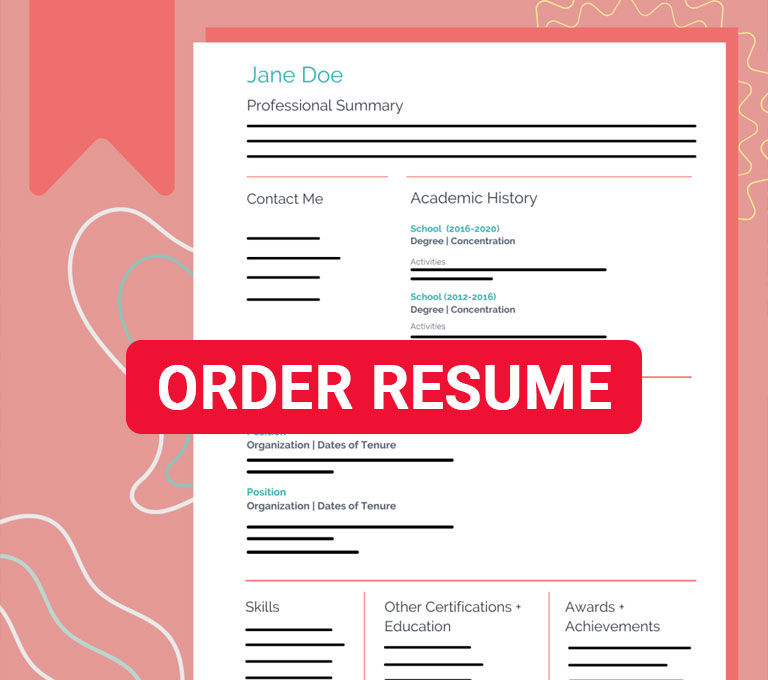The order of the curriculum vitae
How should the various experiences, both educational and professional, be included in the CV? Is there a perfect sequence to follow to compile a perfect resume or better to buy a resume online? And how do you decide in which sequence to insert the various items?
Basically, you can choose three types of CV-s ordered differently:
There is no better CV than another, but there are CVs and essay that perform a different function based on their use and the sector to which they belong. For everyone there is always only one rule: that it is well written, well formatted and consistent.

Consistency: the key word for ordering the CV
An ordered CV is a CV that knows where it starts and where it wants to end, providing the employer with all the necessary information to exceed in length. For this reason it is always good to remember that recruiters never pay too much attention to curricula that are too long and excessive but also to curricula that are disordered in terms of information. Consistency is the fundamental element of a good CV, and it also manifests itself in the order in which the various data are presented. Make sure you include the most important information at the beginning of the text and carefully choose what you want to share on your CV, based on their relevance to the job you are applying for and what you want to highlight.
Define the information to add on the CV
When faced with a blank sheet of paper, deciding what to put in and what to leave out to be considered for a job position can be extremely difficult. The difficulty is not only for those who have a lot of experience but also for those who do not have or have little. For this reason, the determination of the things to add on the CV goes hand in hand with the evaluation of one’s working and professional condition at the state in which the document is filled out. Specifically:
Students or people with little experience
If you have little experience or have just finished studying, you can only choose the chronological CV for which you will have to highlight the following sections : Personal Information, Profile, Training, Work experience remembering to include in this last section also internships, part-time jobs carried out during the school career, etc.
Workers with experience
If you decide to change a job after a few years in the same position, and you have experience in the subject, it is good to follow the reverse chronological order for which the information will be entered in this order: Personal Information, Profile, Work experience (starting from the current one), Training.
Workers looking for a drastic change
If you are part of that circle of people who at some point in your career decide to change sector and employment, it is good to use a CV functional that allows you to highlight your skills. Therefore, the sections must be inserted following this order: Personal Information, Profile, Competences and abilities, Results, Work experience. A CV of this type requires in-depth knowledge of the company you are applying for and the skills required, so that you can emphasize them on your CV.
Freelance or Project Workers
For freelancers or project workers, who by choice therefore change jobs very often, a useful CV is the functional one that allows you to give ample space to your skills and competences along with the various tasks performed, without having to add dates and emphasize only what you know how to do, the companies you work with and your results.
Change your CV based on the job offer
The above information is just a point of departure. It is in fact necessary to have a clear in mind that every time you fill out a CV it would be good to pay attention to the company that will receive it, personalizing it according to the job offer and the company. Understanding the job advertisement is essential to understand how to structure your CV because no offer is the same as the others and no position is the same as the others. A good way to save time and have access to a personalized and customizable CV as needed is to have a basic document complete with all the information from which to extrapolate, from time to time, those necessary for a specific job offer.

Layout, font, structure: the perfect elements to order your CV
Although we are tempted to think that it is only the type of CV that makes the difference, in reality also the way in which it we present is fundamental. Choosing a layout and structure suitable for the job offer and able to emphasize what you want to highlight, together with an easy-to-read font can greatly increase the chances of being selected for a second interview. In fact, it must always be remembered that the first reading of a CV could be carried out by an automatic software for which it is necessary that the document is optimized for AVS software, but the second decision will always be taken by a human being, who will also evaluate the presentation.

